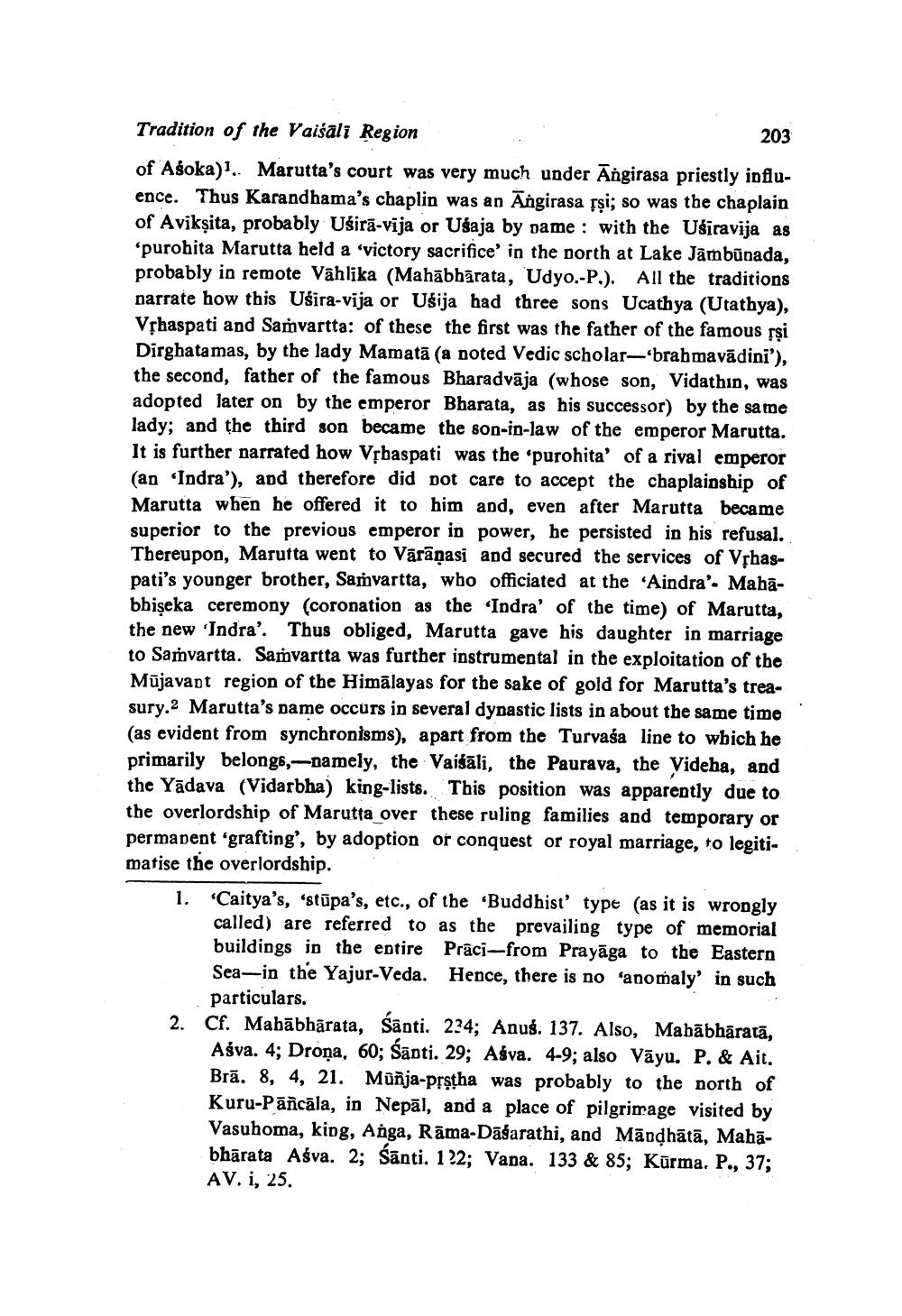________________ Tradition of the Vaisali Region 203 of Asoka). Marutta's court was very much under Angirasa priestly influence. Thus Karandhama's chaplin was an Angirasa ssi; so was the chaplain of Aviksita, probably Usira-vija or Usaja by pame: with the Usiravija as 'purohita Marutta held a 'victory sacrifice' in the north at Lake Jambunada, probably in remote Vahlika (Mahabharata, Udyo.-P.). All the traditions narrate how this Usira-vija or Usija had three sons Ucathya (Utathya), Vrhaspati and Samvartta: of these the first was the father of the famous ssi Dirghatamas, by the lady Mamata (a poted Vedic scholar-brabmavadini'), the second, father of the famous Bharadvaja (whose son, Vidathin, was adopted later on by the emperor Bharata, as his successor) by the same lady; and the third son became the son-in-law of the emperor Marutta. It is further narrated how Vtbaspati was the 'purohita' of a rival emperor (an Indra'), and therefore did not care to accept the chaplainship of Marutta when he offered it to him and, even after Marutta became superior to the previous emperor in power, he persisted in his refusal. Thereupon, Marutta went to Varanasi and secured the services of Vrhaspati's younger brother, Samvartta, who officiated at the 'Aindra'. Mahabhiseka ceremony (coronation as the 'Indra' of the time) of Marutta, the new 'Indra'. Thus obliged, Marutta gave his daughter in marriage to Samvartta. Samvartta was further instrumental in the exploitation of the Mujavant region of the Himalayas for the sake of gold for Marutta's treasury.2 Marutta's name occurs in several dynastic lists in about the same time (as evident from synchronisms), apart from the Turvasa line to wbich he primarily belongs,-namely, the Vaisali, the Paurava, the Videha, and the Yadava (Vidarbha) king-lists. This position was apparently due to the overlordship of Marutta over these ruling families and temporary or permanent 'grafting', by adoption or conquest or royal marriage, to legitimatise the overlordship. 1. Caitya's, "stupa's, etc., of the Buddhist' type (as it is wrongly called) are referred to as the prevailing type of memorial buildings in the entire Praci-from Prayaga to the Eastern Sea-in the Yajur Veda. Hence, there is no 'anomaly' in such particulars. 2. Cf. Mahabharata, santi. 234; Anus. 137. Also, Mababharata, Asva. 4; Drona, 60; Sapti. 29; Asva. 4-9; also Vayu. P. & Ait. Bra. 8, 4, 21. Munja-prstha was probably to the north of Kuru-Pancala, in Nepal, and a place of pilgrimage visited by Vasuhoma, kipg, Anga, Rama-Dasarathi, and Mandhata. Mahabharata Asva. 2; santi. 122; Vana. 133 & 85; Kurma. P., 37; AV. i, 25.




